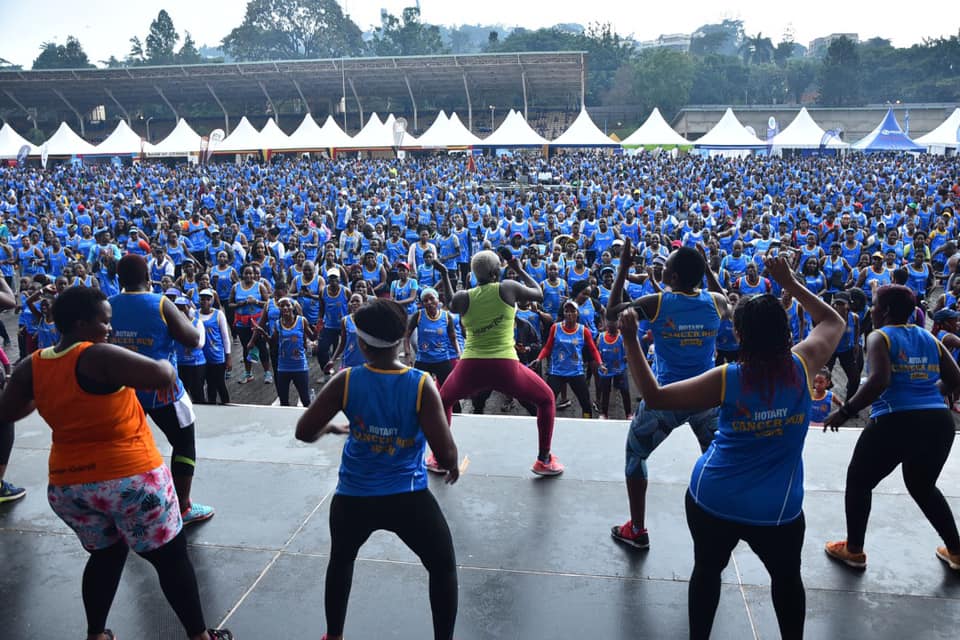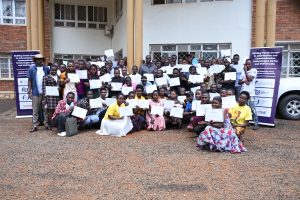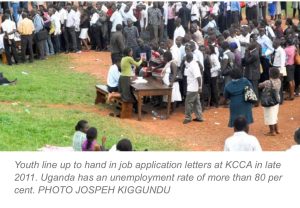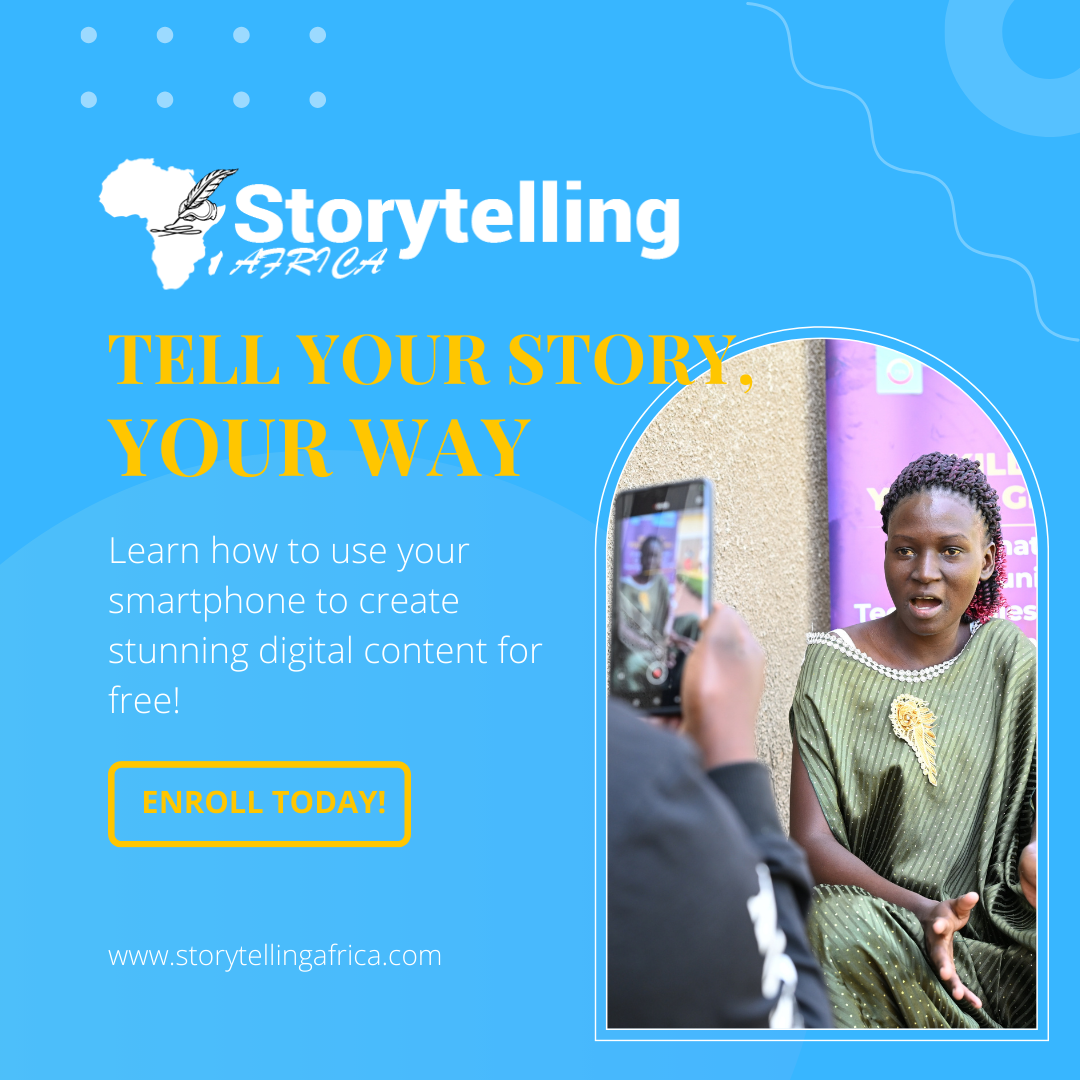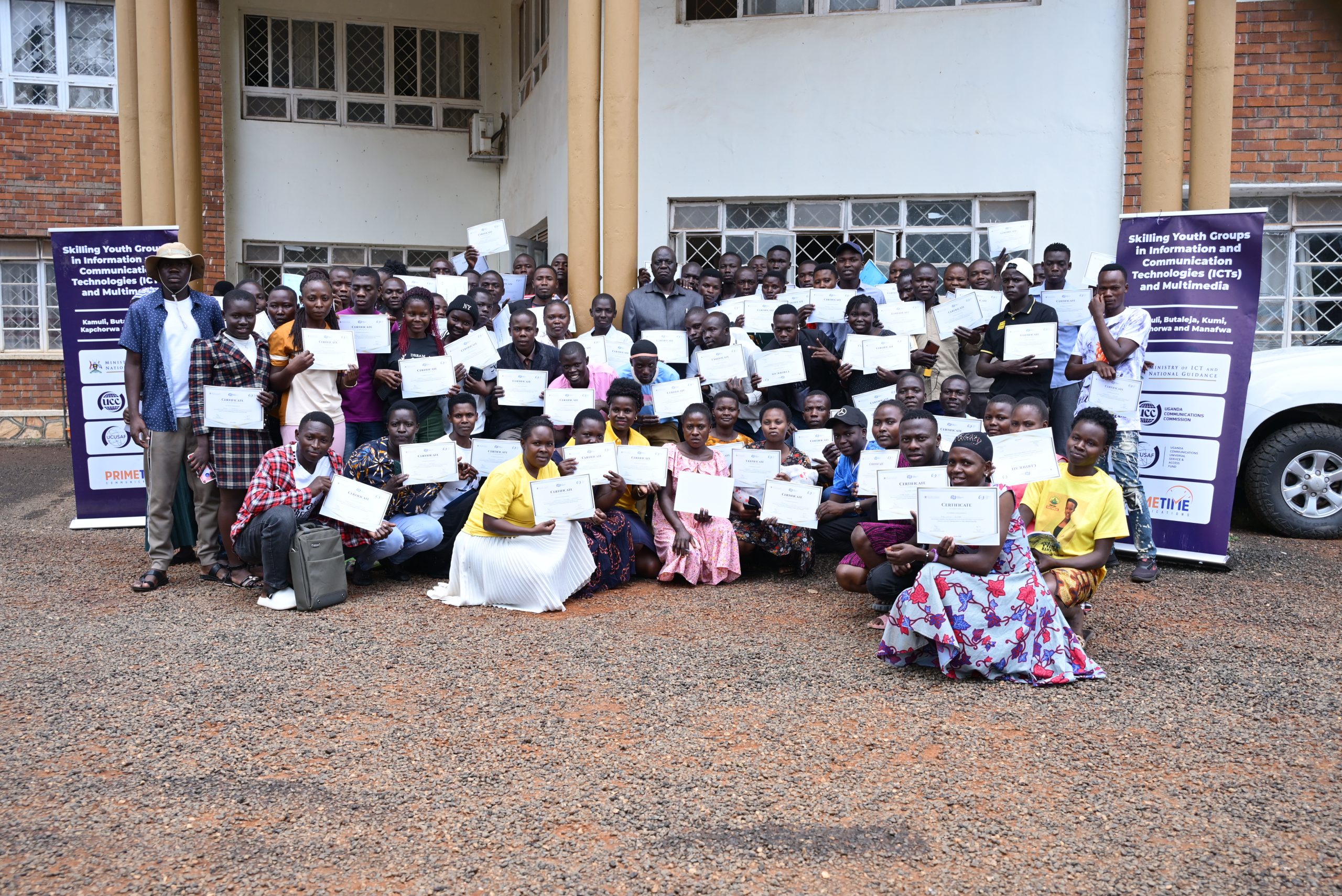By Denis Jjuuko
Since the last Sunday of August 2012, Ugandans have become accustomed to doing one thing annually – waking up to participate in the Rotary Cancer Run. Every last Sunday of August, cancer has been the talk of the town. From a few participants in 2012 to approximately 50,000 people in 2019.
From a parking lot of a shopping mall in Lugogo to the more spacious Kololo Independence Grounds and then to 50 towns across the country. The Rotary Cancer Run was the first and only event in Uganda that was carried out simultaneously in every major town of Uganda. Last year, the run even moved to outside Uganda. Working with the Ministry of Foreign Affairs, the Rotary Cancer Run was held in Mombasa in Kenya, Kigali in Rwanda, Pretoria in South Africa, Berlin in Germany, and Moscow in Russia becoming the first Ugandan event to have a global presence. A few Rotarians ran in Florida and Pennsylvania in the United States.
Over the years, the Rotary Cancer Run has raised awareness about cancer and built a 36-bed cancer treatment centre at Nsambya Hospital and donated funds that led to the construction of the Rotary Blood Bank at Mengo Hospital — the only second such bank in Uganda. All this was achieved in the first four years of the run.
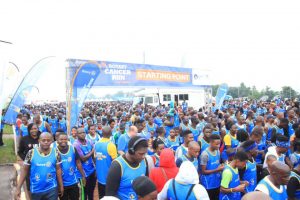
Over the years we have raised approximately Shs3 billion net, but with our network, we have managed to do stuff worth much more than the money we have raised. The building alone at Nsambya is worth more than Shs1.5 billion but was completed when we had raised less than Shs300 million. Our network as Rotary enables us to achieve a lot. Nevertheless, this wouldn’t be possible without the generous support of Centenary Bank and the Parliament of Uganda among many other key partners.
From 2016, the Rotary Cancer Run has been raising money to build bunkers at Nsambya Hospital, which will be used to house modern cancer treatment machines. Construction will soon commence following approvals from the Atomic Energy Council.
I have been privileged to work as one of the organisers of the Rotary Cancer Run since 2015 as a Rotarian and volunteer. This year, I am serving as Chair for the organising committee. I was appointed to this position about a year ago and last September, we started working on the 2020 edition of the run.
We wanted to maintain or even increase the number of towns in Uganda to participate and also have the run in more cities across the world than we managed last year. This year we were planning to become the first Ugandan run to have at least 55,000 people participating. Then COVID-19 happened!
We were all frustrated, and our spirits dampened. How can we just cancel the run that people have become to note on their calendar, for now, nine years? As we deliberated on how to inform people that the run won’t be possible given the COVID-19 pandemic, we realised we could do it and break new ground for virtual events.
We announced that we will have a virtual Rotary Cancer Run 2020. This has given us opportunities to hold the biggest run ever in Uganda and we expect that more than 60,000 people will be able to participate in Uganda and many others elsewhere.
As I was writing this, I received news that many global superstars have agreed to participate in this year’s Rotary Cancer Run. You will see their videos soon and we hope that the messaging will create more awareness about cancer.
Since around February 2020, as a country, we have focused a lot on COVID-19 and it is perfectly understandable given the rate of its infectiousness, but we shouldn’t forget that cancer is still here as well. We need to do all we can to inform people about this scourge and what we need to do to avoid it and go for regular medical check-ups.
We also need to ensure that we have the facilities in place for people to get treatment at an affordable cost. Flying to India or even Nairobi that is usually the case isn’t sustainable and COVID-19 has even made the case better that cancer treatment must be carried out within the country at an affordable rate.
Many companies donated a lot of money to COVID-19 as well as brand new pick ups. The cost of a modern cancer treatment centre costs less than 100 brand new ordinary pick up trucks or just 22 Landcruiser V8s.
The writer is a Communication and Visibility Consultant and Chair Rotary Cancer Run 2020. djjuuko@gmail.com

